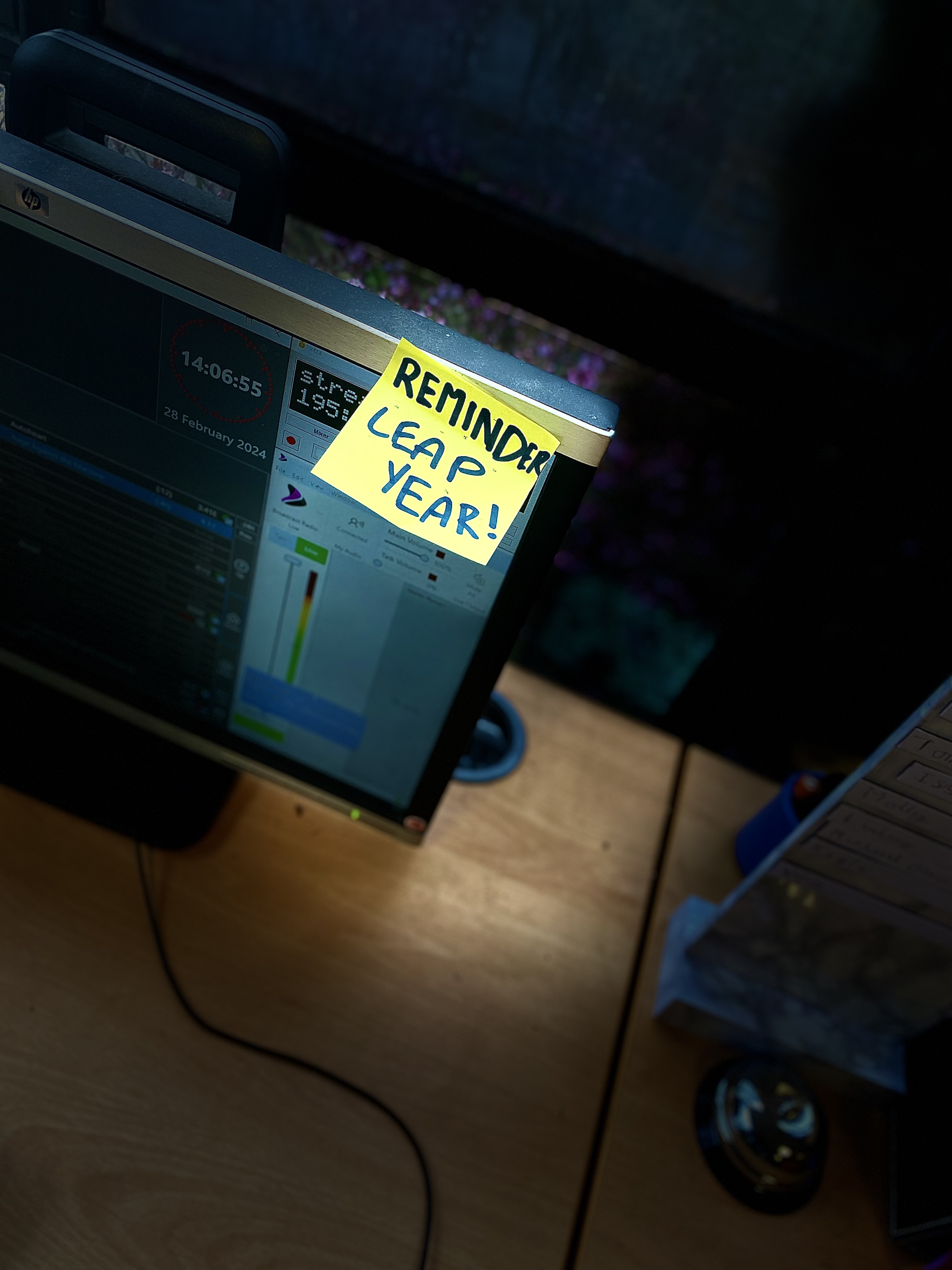By Paige Tamasi
2024 is a leap year and I’ll be honest I don’t understand what a leap year is. I know they occur every four years and cause an additional day to be added to the end of February. But why do they occur?
My initial thought was that there was some inconsistency in the Earth’s orbit around the sun (what determines the length of the year), but then I began wondering why it would take a different length of time for the Earth to orbit the same star. So what gives?
Turns out my gut instinct was right. It takes the Earth just over 6 hours and 365 days to orbit the sun (Nich Eakes, University of North Carolina). So instead of making December 31 six hours longer than every other day in the year, the people in charge of dates, times, and chronology decided to collect all of those 6-hour additions into one day every four years (since 4-years worth of additional 6 hours adds up to one full day).
But it’s not a perfect 6 hours, as I said previously, the earth needs just over 6 hours and 365 days, so again… what gives?
Well if there was a leap year every 4 years exactly then the calendar would be 44 minutes longer (National Air & Space Museum), so they decided that turn of the century years (1000, 2000, 3000, etc) as well as any year that is divisible cleanly by 100 (1800, 1900, 2100, etc) would not be leap years. Well unless they are also divisible by 400, such as 2000. That’s why 1900 wasn’t a leap year but 2000 was.
Okay, cool that clears up how to classify and calculate the next leap year, but who on earth decided on the leap year system in the first place?
Any early civilization with some form of calendar usually based it around the phases of the sun (days) and moon (months). It was the Romans, specifically that one Roman who famously got assassinated on the Ides of March (Julius Caesar), who added a couple of months. This made the original Roman calendar…complicated, so the Romans changed to the Julian calendar around 46 BC. This was based on the sun, so goodbye moon! Caesar’s new calendar had 365.25 days, which started the leap year tradition.
But now we’re back to square one with why there are consistent leap years every four years. Where did that “not divisible by 100 but by 400” hubbub come from?
That can be attributed to Pope Gregory XIII who, in the 16th century, decided to change the calendar. He didn’t like how the dates of different theological events kept changing over time and wanted some chronological consistency. Thus, we now have a slightly different number of days than the Julian calendar (which gradually added days to the year) and have the strange math necessary to calculate leap years!
So, thank you Julius Caesar and Pope Gregory XIII for forcing me to do the math necessary to determine the next leap year. And thank you Earth for taking 365 days, 6 hours, and a bizarre 9 minutes to orbit the sun— you’ve caused a plight for mathematicians and scientists everywhere.
Written by Paige Tamasi, Edited by Chloe Hayler, Photography by Paige Tamasi, Published by Paige Tamasi.
